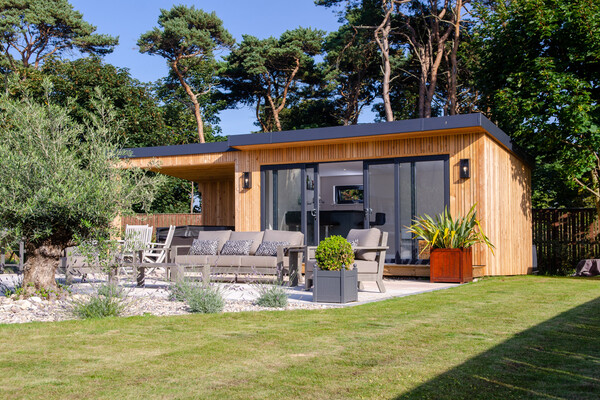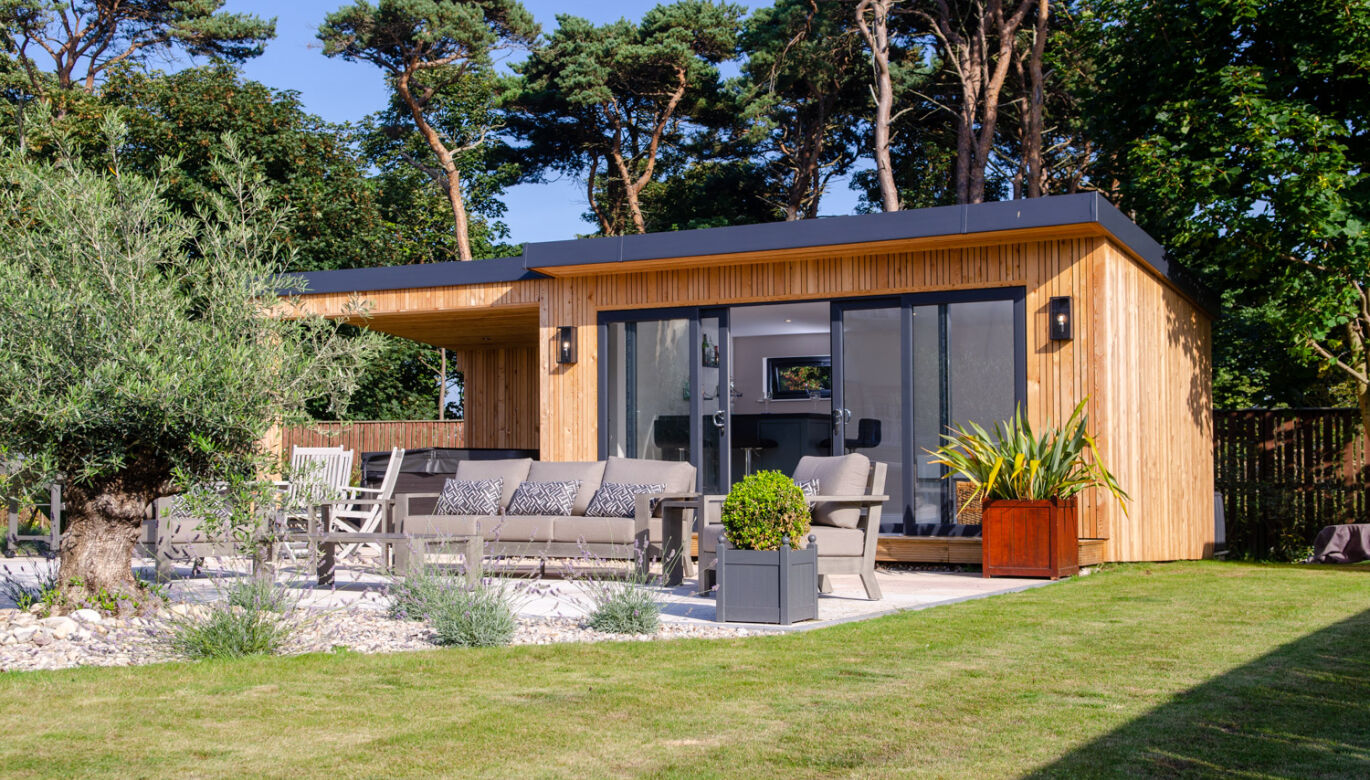The best ways to heat a garden room
13 Nov 2025
Even though today’s garden rooms are well-insulated and built to keep warmth in, they still need a dedicated heat source to keep you warm when the temperature drops. Here are the best ways to heat your garden room.
1. Electric radiators

Electric radiators are a popular choice for a garden room because they are easy to install (available in wall-mounted or freestanding models), are 100% energy-efficient at the point of use and don’t require an annual service. Modern electric radiators also have smart Wi-Fi thermostats so you can control them remotely from your tablet or mobile phone and heat the room for when you need it.
They can be slightly more expensive to run than other options, so you’ll want to choose an energy-efficient make and model.
2. Oil-filled radiators
An electric oil-filled radiator can be a simple and cost-effective option if you want consistent, ambient heat. They work by heating oil sealed inside the radiator, which then radiates heat into the room. Although they are typically more expensive to purchase than electric radiators, they hold their heat for longer, continuing to warm the room even after being turned off.
3. Underfloor heating
There are lots of benefits of underfloor heating. It’s great for smaller rooms as it doesn’t take up any wall or floor space, maintains a consistent temperature, doesn’t require a lot of maintenance (if any), is more efficient than conventional heating and has lower running costs.
However, underfloor heating is usually more expensive to install, especially if you want to retrofit it to an already laid floor. It’s always best to decide this at the planning stage of your garden room build. It can also be classed as a permanent heat source, so you'll need to make sure it fits with permitted development regulations.
Another con is the time they take to warm up; you may not feel the effects for an hour or two from turning it on.
4. Infrared heaters

Infrared heaters work by warming objects and people rather than just heating the air. It’s a bit like feeling the sun on your skin; you feel the warmth even if there is a cool breeze blowing. Because of this, they are a very energy-efficient option, especially if you connect them to solar panels. They also get up to temperature quickly, are easy to install (can be freestanding, wall or ceiling mounted), and don’t require any maintenance.
Depending on the panel output power, they cost anywhere upwards of £100-£500 per panel and will cost between £80 and £200 to run per year (based on a couple of hours a day usage).
5. Wood-burning stove
If you have visions of sitting in your garden room in winter watching the snow fall, then there isn’t a cosier option than a wood burner. They provide substantial heat and add a charming focal point to any room with the crackle of wood and glowing embers.
Modern wood burners are much more energy efficient (some are as much as 80%) and they are a renewable fuel source. They can also be cheap to run - if you have your own supply of wood, then it won’t cost you anything.
However, as a garden room is a small space and super insulated, we don’t advise a wood burner. The heat they generate is just too great and you’ll find yourself gasping for air pretty quickly! They are also expensive to install and likely require permission from your local council. Including the stove, flue and lining, the average cost to install a stove is around £2,000.
6. Fan heater
Probably the cheapest option on this list to purchase, a fan heater could set you back as little as £15. They work by blowing warm air into a space, but don’t retain any heat when they are switched off. They are also very power intensive; a 2kW electric heater will cost around 50p an hour, so you wouldn’t want to use it for prolonged periods.
7. Passive solar gain and insulation

While you will probably need a heat source for your garden room, you only want to use it when you have to. The most efficient garden rooms are those that trap and retain heat to begin with. This comes down to how well your garden room is built, and how it maximises the warmth of the sun.
The orientation of your room and the position of doors and windows are key to this. A south-facing orientation, for example, allows for maximum sun exposure throughout the day, particularly during the colder months when the sun is lower in the sky. However, you also need to be careful that the temperature isn’t unbearable during the summer months. Carefully positioned eaves, pergolas or trees or bushes providing shade can help with this.
But the heat you gain from the sun is only useful if you can keep it inside. A well-built garden room should be as airtight and thermally efficient as a modern home.
For our garden rooms, we use our own insulated timber kit panels, which feature a combination of rigid foam or PIR insulation in the floors and ceiling and hemp in the walls. We also fit UPVC double-glazed windows and doors as standard.
We also offer the option of a living sedum roof. A living roof acts as a natural insulator, providing a layer of protection that works in all seasons. In the winter, the plant material and substrate trap warm air, reducing heat loss from the roof by up to 50% compared to a bare roof. In the summer, it prevents the sun's heat from being absorbed, keeping the interior of your garden room significantly cooler. It's a fantastic way to enhance the energy efficiency of your garden room while also providing a beautiful, bio-diverse habitat.
Find your perfect garden room
At Outside In, we build high-quality, bespoke garden rooms you can enjoy every single day of the year.
Contact us today for a free, no-obligation quote.
